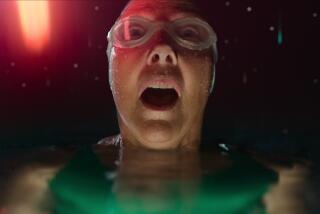How I Made It: Bonnie Arnold, producer of ‘How to Train Your Dragon’
- Share via
The gig: Bonnie Arnold is a producer of animated and live-action movies, including the independently produced Tolstoy love story “The Last Station” and DreamWorks Animation’s 2010 hit “How to Train Your Dragon,” which has garnered Oscar nominations this year for best animated feature and best original score. Arnold is based at DreamWorks Animation Studios in Glendale.
Oscar jitters: Arnold is no Oscar novice. Three films she worked on have received Academy Awards, including “Dances With Wolves” and “Toy Story.” “The Last Station” was nominated last year for two awards. But Arnold says she still gets nervous. “I know I won’t eat for a while before the show,” Arnold said. “To get the best-animated-feature nomination is an unbelievable achievement not just for me but also for my team. It’s special.”
Personal: Arnold, 52, lives in Santa Monica with her husband and teenage daughter. Favorite hobbies include playing tennis and reading anything by Mississippi writer Eudora Welty. Born and raised in Atlanta, she credits her interest in family movies to her mother, a teacher and avid film buff who often took her and her brother to watch movies like “Mary Poppins” at a theater where her uncle worked as a projectionist.
An unlikely path: Fascinated by the exploits of Bob Woodward and Carl Bernstein, Arnold initially planned a career in journalism, which she studied at the University of Georgia and Boston University, where she received a master’s degree. “I loved movies, but that happened in Hollywood and I was 3,000 miles away.”
Catching the film bug: Arnold landed a job as a unit publicist on American Playhouse’s debut production of “King of America,” where she got her first taste of the film business. “I thought, ‘This is what I’m going to do,’ the moment I stepped into the production office and saw all the craziness going on,” she said. During the 1980s, Atlanta had become a hub for film and TV production, which was fortuitous for Arnold. She found herself working various production jobs on a string of movies, including Neil Simon’s “The Slugger’s Wife” and Peter Weir’s “The Mosquito Coast.”
Meeting buffalo ranchers: While working on the Tony Scott film “Revenge,” Arnold struck up a rapport with then up-and-coming actor and producer Kevin Costner, who gave Arnold her first production assignment on “Dances With Wolves.” Her job was to do the advance work for the film, meeting with police, government officials and buffalo ranchers in South Dakota to secure film locations and coordinate a crew of 80 people for a six-month shoot. “I remember thinking, ‘Nobody has ever seen the American West presented in this way,” she said.
Woody beckons: A friend suggested that she meet with then-Disney studio executive Peter Schneider to talk about working in animation. Arnold was skeptical because she knew nothing about that world. But she followed her mother’s advice: “She always told me to ‘meet everybody and don’t ever refuse a meeting.’ ”
Mom was right; that meeting proved pivotal. Schneider eventually tapped Arnold as producer on “Toy Story,” whose director, John Lasseter, impressed her with his unique vision. “I thought, ‘This is going to change the world,’ ” Arnold said. “ ‘I need to be part of this.’ ”
Not that there weren’t some cultural differences. “I walked into my office and I said, ‘Where is my typewriter?’ They sort of laughed me out of the building. They said they were going to teach me how to use a computer.”
The success of “Toy Story” launched Arnold’s career in animation. She went on to produce Disney’s retelling of “Tarzan” before former Walt Disney Studios chief Jeffrey Katzenberg lured her to rival DreamWorks to produce “Over the Hedge” and “How to Train Your Dragon.” Arnold recruited renowned cinematographer Roger Deakins to bring live-action filmmaking techniques, such as subtle use of lighting, to the Viking tale directed by Chris Sanders and Dean DeBlois.
Best advice: “I think the best advice is, stick with what you want to do and don’t get discouraged,” Arnold said. “From the time I discovered I could get paid to do this, I felt this is something I want to do. There is a little bit of luck involved, but I worked very hard and I tried to learn from my mistakes, watch what other people did and be strategic about jobs I took.”
More to Read
Inside the business of entertainment
The Wide Shot brings you news, analysis and insights on everything from streaming wars to production — and what it all means for the future.
You may occasionally receive promotional content from the Los Angeles Times.








